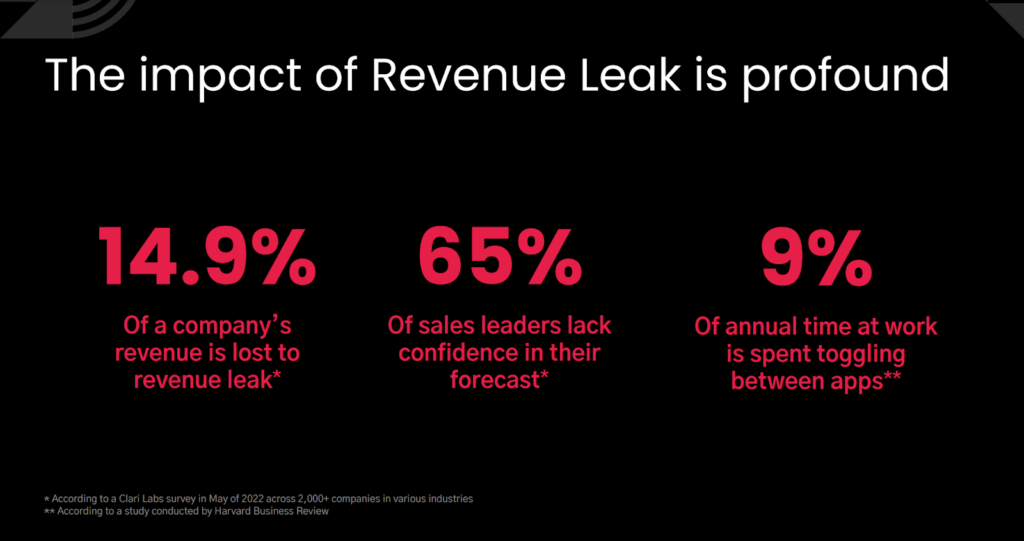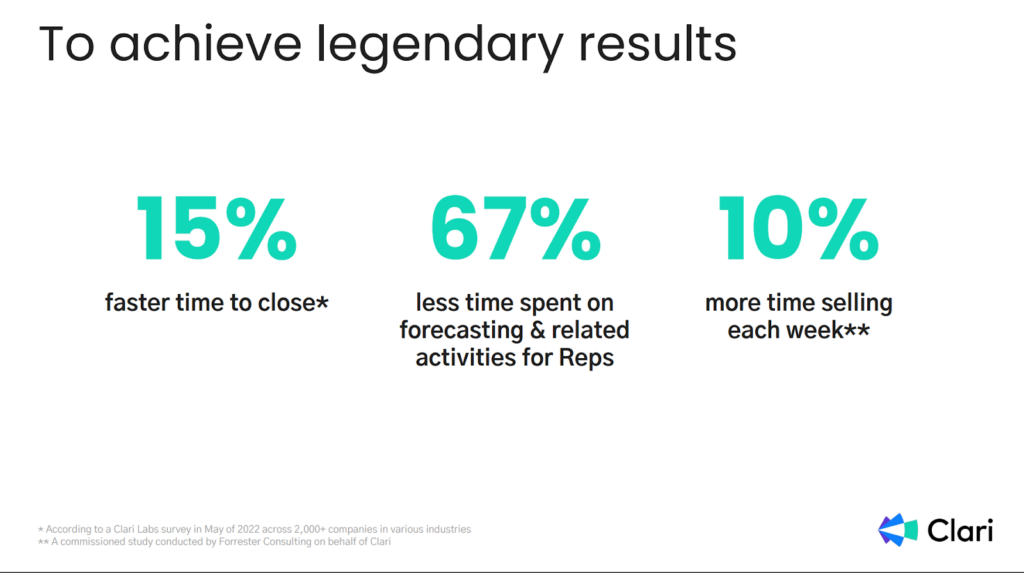Time to Revenue: How to Win More Deals and Protect Your Customer Base
Subscribe to RunRevenue.Pro and get one tip for protecting your revenue — plus updates on new frameworks, playbooks, and exec conversations for running revenue like a pro — delivered straight to your inbox every Friday.
We’re in a time of uncertainty—radical uncertainty.
In uncertain times, most companies are singularly focused on cutting costs. That’s important, sure, but really only half of an effective strategy.
The other side of the coin? Managing costs AND revenue.
But breaking that down even further, it’s not as simple as “managing revenue.” Instead, it’s managing time to revenue.
Time to Revenue sounds fancy, but it’s really relatively straightforward. Time to revenue is the time it takes to set up the revenue process—to build the tech stack, harvest relevant signals, analyze, act, and, ultimately, drive revenue.
Higher performance. Higher efficiency. Higher predictability. Higher growth.
Yet legacy systems (spreadsheets, CRM, BI, etc.) are not purpose-built to run revenue, so they actually slow you down, resulting in higher time to revenue.

Chasing down revenue-critical signals through disparate technology solutions is far from ideal.
With old, disconnected systems in place, teams are paralyzed in revenue-critical moments.
Time to revenue shoots through the roof, and revenue leak—the loss of revenue due to breakdowns in the revenue process—takes over.
Deal slippage is rampant. Lead follow-ups are missed. Winnable opportunities are lost — and you can’t figure out why.
Revenue leak is the biggest problem hiding in plain sight, and its impact is profound:

Say you are a $1B company…Revenue Leak means you are losing $150M annually. Wasted. Unnecessarily.
And this is an industry-wide issue. According to BCG, $2.1T in economic value is destroyed each year by Revenue Leak. That’s trillion, with a T.
The good news? This is solvable. The key is mastering your time to revenue by getting closer to revenue precision—the full capture of revenue, predictably and repeatedly.

So what does that actually look like in practice?
Revenue is the most essential process in your company (and customers are key)
That’s worth stating again.
Revenue is not just an outcome, it’s the most essential process in your company.
Once you see your business through that lens, you realize there’s a huge opportunity to accelerate your time to revenue process, and as a result, your business growth.
And, as Nick Mehta, CEO of Gainsight, shared here, it starts by centralizing customer data:
“We all want to create companies built to last, organizations that can survive through thick and thin. Over the past ten years, the strategy was to ‘grow at all costs and raise as much money as possible.’ I think we can agree that approach was a mirage. The only way to build a lasting company is to have a durable approach to growth … one way to attack this is growth through existing customers (your biggest asset): Retain, expand, make them better advocates, create a more self-service product, and so on.”
Growing that customer base efficiently and durably is essential.
But let’s go back to time to revenue, a number you should proactively reduce as much as possible.
Becoming a student of time to revenue
It’s important to understand the components of time to revenue. Fully grasping this metric means asking—and answering—the following:
- How long does it take a rep to manage their deal?
- How long does it take for a manager to identify risk in their pipeline?
- What is the hidden upside for the next quarter?
- How long does a regional director take to roll up a forecast to accurately know if they will meet, beat, or miss on revenue?
The speed at which this all needs to be completed is paramount.
You have revenue leak if you are late on any of the above. And this leak will have a profound impact on both your top and bottom lines. Moreover, it has a trickle-down effect. As Nick Mehta summarizes, “Spiral happens. Growth slows which means less operating income to invest, so research and development decreases…and so on.”
We must rethink revenue and invest time and money into becoming a student of time to revenue strategy. Looking at the revenue process through this lens, you will see things you’ve never seen before as a leader and start to drive a new way of running revenue.
Think: Durable growth.
Becoming a student of time to revenue looks different based on which lens you are looking through:
Sales Reps care about time—a seller’s most valuable resource. More time in a rep’s day means more opportunities to close more deals, create higher conversions, and time to build pipeline.
Good technology, particularly AI, empowers reps to become their own “chief of staff.” Implementing systems that automate all manual data entry helps give reps that much-valuable time back.
CROs/Boards need an “always on” interface that proactively tells them if they will meet/beat/miss revenue by team, segment, geography, and so on. CROs don’t want to tell someone to “build a report.” All of this automation and real-time reporting help reduce time to revenue and inform teams where to spend time. Bonus: It also increases the probability of hitting/exceeding growth targets.
Customer Success needs to focus on predictability, efficiency, and impact.
- Predictability: Your customer base should be the most predictable part of your business!
- Efficiency: Doing more with less. This happens by investing more in digital-first/more automation and using all channels to scale net retention.
- Impact: CS teams need to show the product impact quickly. This requires a high-level collaboration between sales and customer success. Both teams must be laser-focused on the value they need to deliver collectively.
As leaders, we need to answer a million-dollar question in two minutes, not two weeks.
How to tell if you’re reducing your time to revenue
Here are a few signals to look at to evaluate how you’re doing.
First, look at the leading indicator data. Then, actively search for “moments of revenue leak” in your pipeline and cross/upsell opportunities. When looking for leak, dig into both systems (tech) and the process. Too often, we forget about the process.
This may sound obvious, but don’t ignore the competition. We are living in an economic environment where one of the biggest threats (and opportunities) is vendor consolidation.
Make this a non-factory by being deliberate about how you can drive more value. Remember: If you are not doing this, plenty of other organizations will step in (and replace you).
If you’d like to master your time to revenue and stop revenue leak at your org, Clari is here to help. See Clari in action here.



